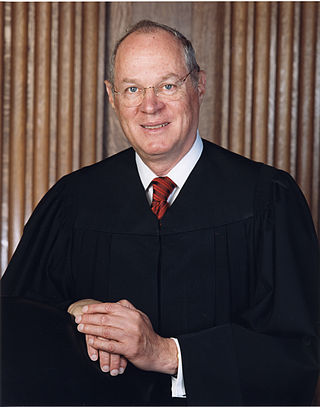| Type | Case | Citation | Issues | Joined by | Other opinions |
|---|
401
| Smith v. Cain | 565 U.S. 73 (2012)
| Due Process Clause • Brady disclosure • materiality of witness impeachment evidence | | |
|
202
| Hosanna-Tabor Evangelical Lutheran Church and School v. EEOC | 565 U.S. 171 (2012)
| Americans with Disabilities Act • First Amendment • ministerial exception to employment discrimination laws | | |
|
103
| Pacific Operators Offshore, LLP v. Valladolid | 565 U.S. 207 (2012)
| Outer Continental Shelf Lands Act • Longshore and Harbor Workers' Compensation Act • coverage of injury occurring on land | Roberts, Kennedy, Ginsburg, Breyer, Sotomayor, Kagan | |
|
204
| Perry v. New Hampshire | 565 U.S. 228 (2012)
| Due Process Clause • eyewitness identification made under suggestible circumstances | | |
|
205
| Perry v. Perez • [ full text ] | 565 U.S. 388 (2012)
| Voting Rights Act of 1965 • preclearance • redistricting | | |
| Thomas concurred in the Court's vacatur and remand of a District Court's interim redistricting map for Texas, a state that was subject to preclearance requirements for state redistricting plans under section 5 of the Voting Rights Act. While the Court's decision was based upon the District Court's departures from the state's plan that were not based upon legal flaws or other clear standards, Thomas instead believed that section 5 was unconstitutional. Texas should, therefore, have been able to implement its proposed redistricting map for the 2012 election, unless and until there was a finding against it under the alleged violations of section 2 of the Voting Rights Act or the U.S. Constitution. |
106
| Kawashima v. Holder | 565 U.S. 478 (2012)
| immigration law • conviction for false tax return as basis for deportation | Roberts, Scalia, Kennedy, Alito, Sotomayor | |
|
107
| Kurns v. Railroad Friction Products Corp. | 565 U.S. 625 (2012)
| Locomotive Inspection Act • injury from asbestos exposure • state law claims for defective design and failure to warn • federal preemption | Roberts, Scalia, Kennedy, Alito, Kagan | |
|
408
| Utah Highway Patrol v. American Atheists, Inc. • [ full text ] | 565 U.S. 994 (2011)
| First Amendment • Establishment Clause • religious displays on government property | | |
| Thomas dissented from the Court's denial of certiorari, in a case in which the placement on public land of large crosses to commemorate the deaths of highway patrol officers was ruled unconstitutional. Thomas criticized the lack of clarity and indeterminacy of the Court's tests for whether such a display violated the First Amendment, and noted what he saw as the confusion and contradictions this caused in lower court rulings. "It is difficult to imagine an area of the law more in need of clarity," Thomas wrote, urging the Court to address this problem even if it did not adopt his view that the Establishment Clause only applied to the Federal Government and only prohibited "actual legal coercion." |
209
| Coleman v. Court of Appeals of Md. | 566 U.S. 30 (2012)
| Family and Medical Leave Act of 1993 • self-care provision • Fourteenth Amendment • abrogation of state sovereign immunity | | |
|
110
| Kappos v. Hyatt | 566 U.S. 431 (2012)
| patent law • introduction of new evidence in challenge to denial of patent application | Unanimous | |
|
211
| Wood v. Milyard | 566 U.S. 463 (2012)
| habeas corpus • court of appeals raising sua sponte deliberately forfeited statute of limitation defense | Scalia | |
|
112
| Reichle v. Howards | 566 U.S. 658 (2012)
| First Amendment • retaliatory arrest • qualified immunity • Secret Service | Roberts, Scalia, Kennedy, Alito, Sotomayor | |
|
113
| Elgin v. Department of Treasury | 567 U.S. 1 (2012)
| Civil Service Reform Act of 1978 • Merit Systems Protection Board • jurisdiction over constitutional claims by federal employees | Roberts, Scalia, Kennedy, Breyer, Sotomayor | |
|
214
| Williams v. Illinois | 567 U.S. 50 (2012)
| Sixth Amendment • Confrontation Clause • expert testimony | | |
|
315
| Arizona v. United States | 567 U.S. 387 (2012)
| immigration • federal preemption • Arizona SB 1070 | | |
|
416
| Miller v. Alabama | 567 U.S. 460 (2012)
| Eighth Amendment • Cruel and Unusual Punishment • sentencing of juveniles to life without parole | Scalia | |
|
417
| National Federation of Independent Business v. Sebelius | 567 U.S. 519 (2012)
| Patient Protection and Affordable Care Act • individual mandate • Anti-Injunction Act • Commerce Clause • Necessary and Proper Clause • Medicaid expansion • coercive conditions on federal spending | | |
| Signed jointly with Scalia, Kennedy, and Alito. |
418
| National Federation of Independent Business v. Sebelius | 567 U.S. 519 (2012)
| Patient Protection and Affordable Care Act • individual mandate • Commerce Clause • | | |
| In addition to the four-justice, jointly-authored dissent, Thomas filed a separate dissent. |


